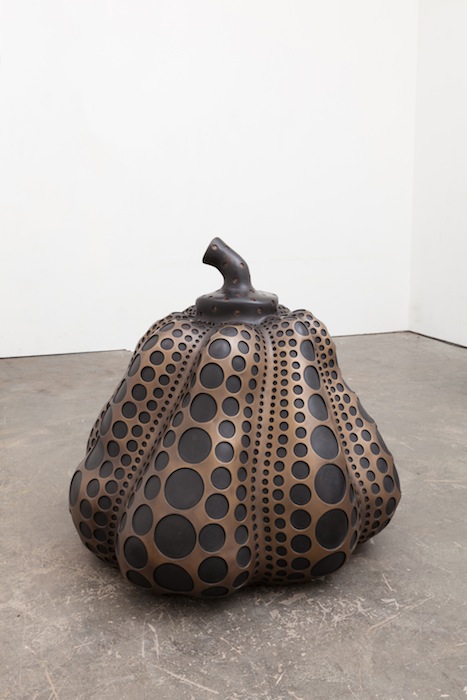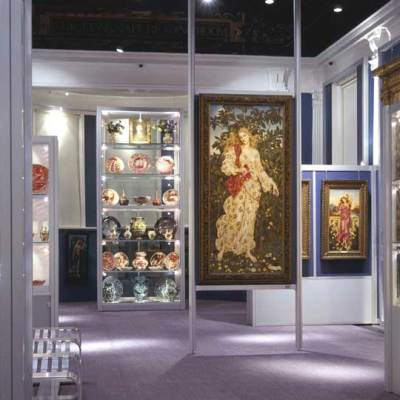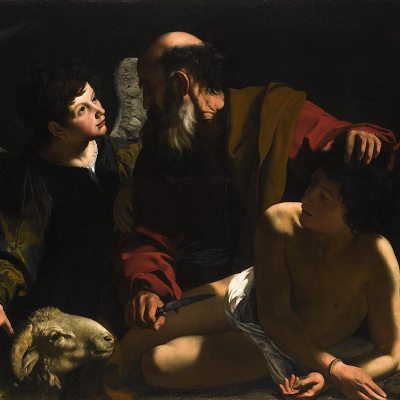Art Basel has in recent years consolidated its position as the world’s most prestigious art fair, with the expansion of the franchise to locations in Miami and Hong Kong only serving to bolster the status of its Swiss flagship. That seems symptomatic of a general tendency: as the art world adjusts to an increasingly peripatetic lifestyle, its calendar every year more cluttered by fairs and biennales in further corners of the world, so the best established of these scattered events have become indispensable.
All fairs are founded upon a commercial imperative, and Art Basel (19–22 June) retains its pre-eminence primarily because it continues to attract the most influential collectors and, in chicken-and-egg style, the most powerful galleries. Yet for an ever more dispersed global art community it also serves a vital secondary purpose as an annual summit, a hub at which the art world’s most influential figures convene to share ideas and catch up on the latest developments.
At the heart of this widening of the fair’s remit is its ‘Conversations’ strand, which presents artist talks, interviews and panel discussions, and addresses subjects as varied as the latest vagaries of the market, art historical reappraisals and new directions in curating. One of this year’s highlights is a panel on ‘The Artist as Choreographer’ moderated by Hans Ulrich Obrist, co-director of the Serpentine Galleries in London.
‘In Just a Blink of an Eye’ (2005), Xu Zhen. Presented at 14 Rooms in Basel by Fondation Beyeler, Art Basel, Theater Basel in 2014. MCH Messe Schweiz (Basel) AG.

Obrist and his fellow curator Klaus Biesenbach (director of New York’s MoMA PS1) are behind the project that best exemplifies Art Basel’s aspiration to the status of temporary museum. The latest iteration of a performance-as-sculpture project that began in 2011 at the Manchester International Festival, ‘14 Rooms’ is installed for the fair’s duration. In an exhibition commission of unprecedented scale for a fair, artists (including Marina Abramović, Damien Hirst, Roman Ondák, Xu Zhen and Yoko Ono) are granted their own dedicated exhibition spaces, designed by Herzog & de Meuron, to present works that straddle the line between live performance and sculpture.
The inclusion of Marina Abramović’s Luminosity (1997), for which a nude model bathed in bright light and pinned against a wall perches on a bicycle seat, is one reason this group show wouldn’t look out of place in a museum. Damien Hirst presents Hans, Georg (1992), for which identical twins sit beside two of his dot paintings, while British artist Ed Atkins, the subject of a solo show at the Serpentine Sackler Gallery this summer (11 June–25 August), and among the most prominent of a group of London-based artists pushing the frontiers of digital art, presents a specially commissioned work.
Installation view of ‘Wantee’ (2013) at Tate Britain, London, Laure Prouvost. MOT International at Art Basel. Courtesy the artist and MOT International.

Click here to buy the June issue of Apollo
A similar ambition is evident in Gianni Jetzer’s selections for the fair’s ‘Unlimited’ section, which provides a ‘platform for projects that transcend the limitations of a classical art-show stand’. It is striking that a number of galleries have taken this brief as an invitation to wheel out monumental works from recent decades. Konrad Fischer Galerie dusts down Carl Andre’s Steel Peneplain, which was first conceived for Documenta 7 in 1982, while Lisson shows Richard Long’s River Driftwood Circle, the wood for which was sourced from the Avon in 1996. These are eminently physical works, their power deriving from their concern with elemental human processes such as walking, stacking, lifting. They embody an engagement with the body and the material world that is at odds with the tendency towards performative, digital or narrative-based practices exemplified by ‘14 Rooms’. It will be fascinating to see how the combination of new and old reflects on both. Bruce Nauman sits across both, as evidenced by his inclusion here and in the main section of the fair, where he is the subject of a large co-presentation by David Zwirner and Hauser & Wirth.
‘Striding Figure II (Ghost)’ (2012), Thomas Houseago. Hauser & Wirth at Art Basel. Courtesy Thomas Houseago and Hauser & Wirth.

Thomas Houseago’s Striding Figure II (Ghost) (2012), also presented by Hauser & Wirth, is another highlight. The British-born artist’s magpie assimilation of influences from pop culture to primitivism is exemplified by this thrilling, threatening renovation of the modernist sculptural tradition. It seems appropriate, then, that it should be seen here alongside works by Anthony Caro (Annely Juda) and Marcel Duchamp (Galerie 1900–2000), and indeed a re-engagement with the legacy of modernism emerges as something of a theme. Laure Prouvost’s Wantee (2013), commissioned to accompany last year’s Kurt Schwitters’ retrospective at Tate Britain, receives another airing courtesy of MOT International, and it will be interesting to see if its idiosyncrasies resonate with a transnational audience in a busy marketplace. As Jelena Seng, associate sales director at Victoria Miro reminds me, this is the fair to which the world’s most powerful galleries ‘bring their best work’, which explains the London dealer’s decision to exhibit the much sought-after Yayoi Kusama.
‘Pumpkin (S)’ (2013), Yayoi Kusama. Victoria Miro at Art Basel. Courtesy Yayoi Kusama Studio Inc., Ota Fine Arts, Tokyo/Singapore and Victoria Miro, London. Photo: Angus Mill. © Yayoi Kusama.

With its talks, film and exhibitions programming, Art Basel seems to be competing less against other fairs than against the world’s leading museums. Yet, as always, it is on the quality of the work presented that the fair will be judged. On that there is little danger of disappointment.
Art Basel is at Messe Basel, Messeplatz, from 19–22 June.
Click here to buy the June Apollo
Related articles
Art Basel in Hong Kong: May Apollo (Ben Luke)



